YAY
The Ultimate Color Combinations Cheat Sheet
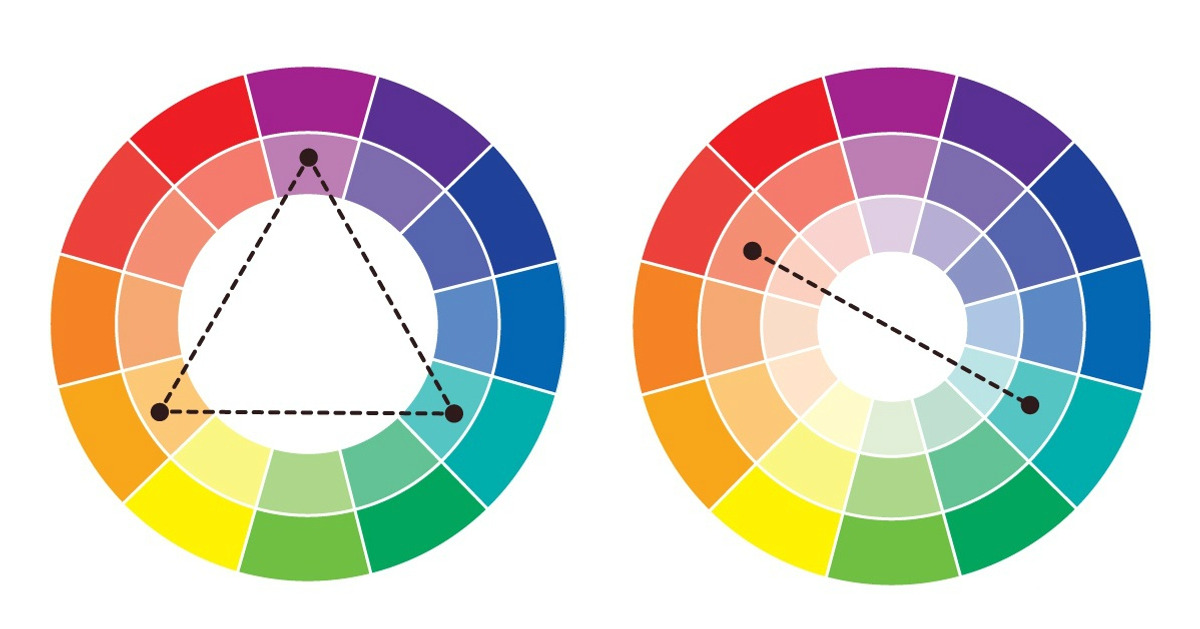
Scheme № 1: A complementary combination
Complementary (also known as supplementary or contrasting) colors are colors that sit opposite of each other on the Itten color circle. The combination of such colors creates a vivid and energizing effect, especially at maximum saturation.
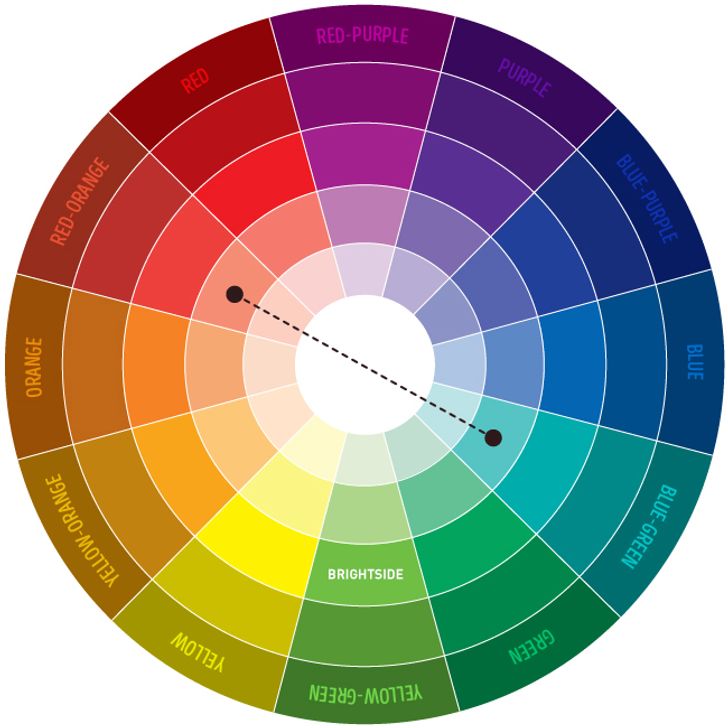
Scheme № 2: The triad — a combination of three colors
A Triad is a combination of 3 colors that are equidistant from each other on the color circle. It produces a high contrast effect while preserving ’harmony.’ Such a composition looks vibrant even when you use pale and unsaturated colours.
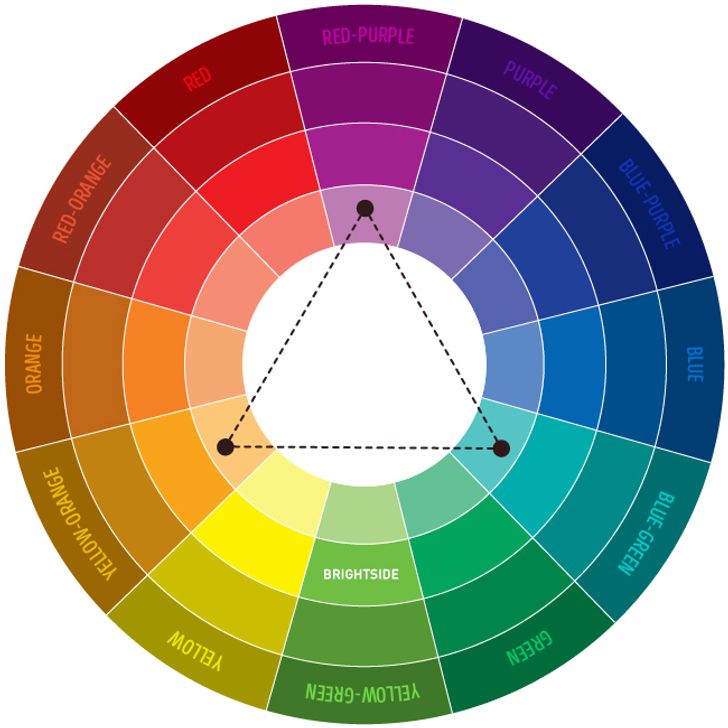
Scheme № 3: An analogous combination
This is a combination of 2 to 5 (ideally 2 to 3) colors that are ajacent to each other on the color circle. It creates a calming, likeable impression. Here’s an example of combining analogous muted colors: yellow-orange, yellow, yellow-green, green, blue-green.
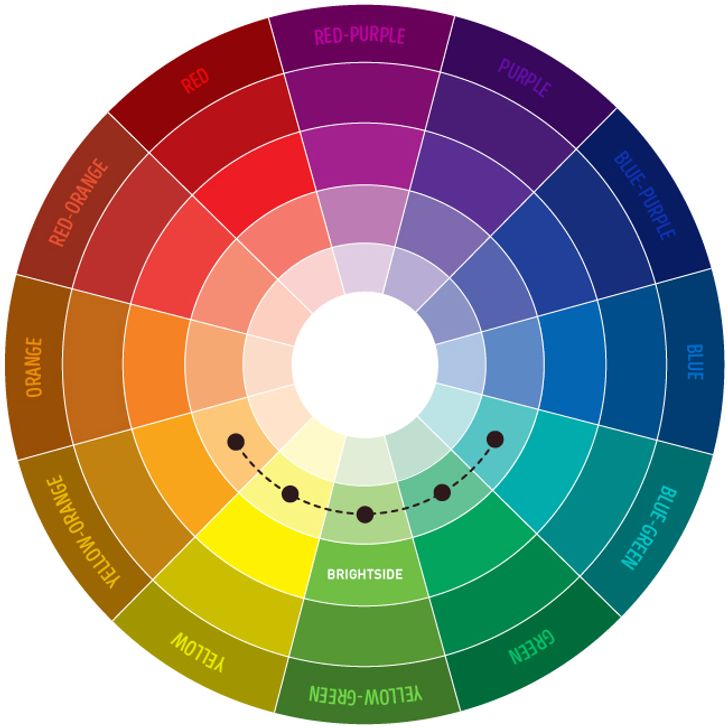
Scheme № 4: The split complementary combination
A variation on the complementary color combination. In this case, you take one primary color and two complementary ones (the colors that lie on both sides of the primary color’s antipode on the color circle). The effect created by such a scheme is just as contrasting as the one before but slightly less intense. If you feel unconfident about using the complementary scheme, use the split complementary instead.
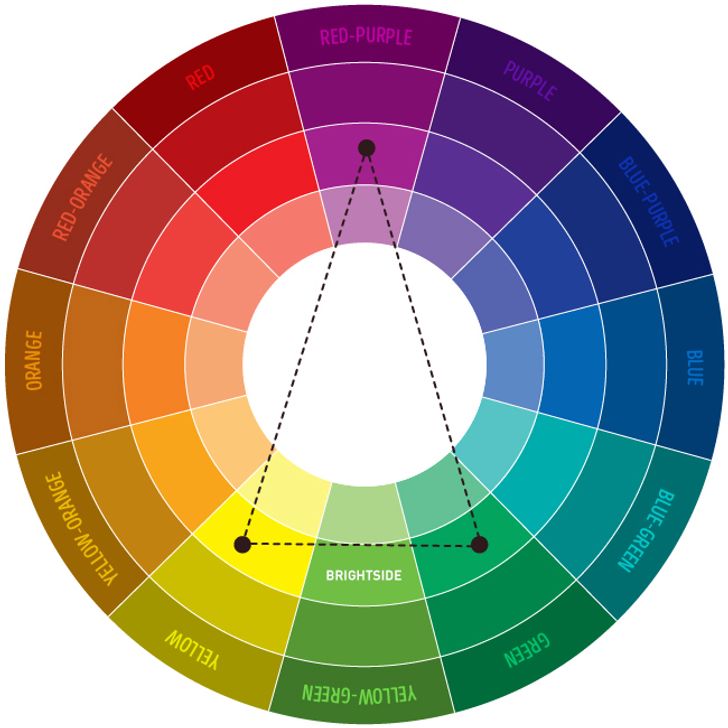
Scheme № 5: The tetrad — a combination of four colors
This is a scheme that includes one primary and two complementary colors, plus an additional color that highlights the accents. An example: blue-green, blue-violet, orange-red, orange-yellow.
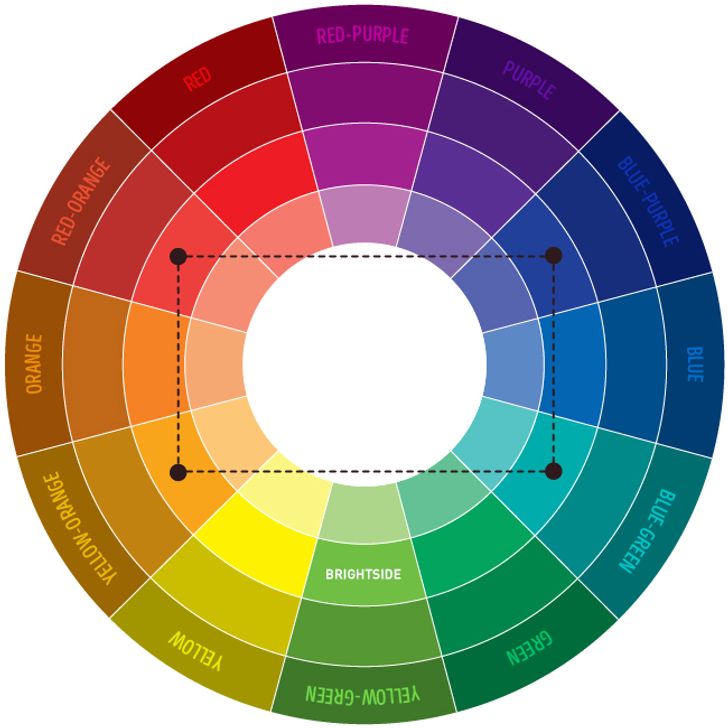
Scheme № 6: The square
A combination of 4 colors that are equidistant from each other on the color circle. In this case, the colors differ from each other in tone, but are also complementary. This creates a dynamic, vivid, and playful effect. An example: violet, orange-red, yellow, blue-green.
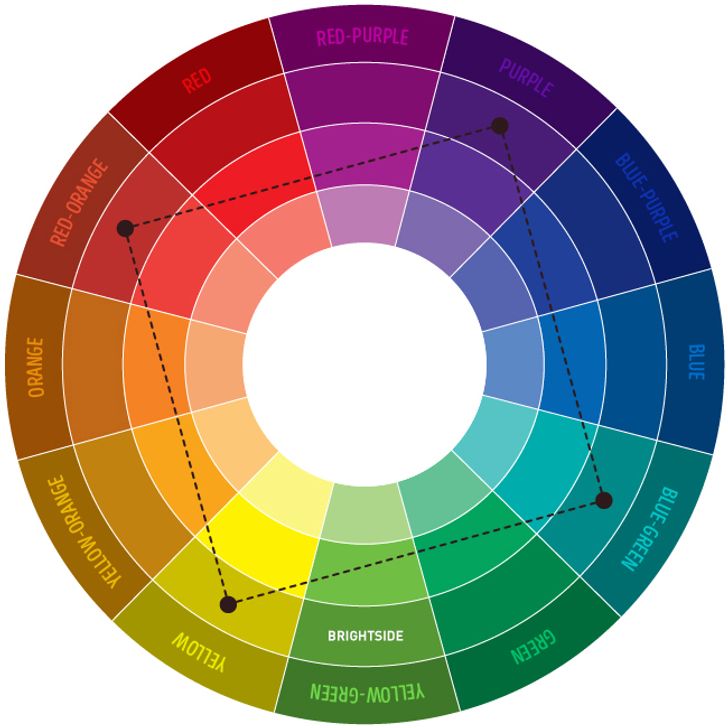
Combinations of individual colours
- White: combines with everything, especially blue, red and black.
- Beige: combines with blue, brown, emerald, black, red, white.
- Gray: combines with fuchsia, red, violet, pink, blue.
- Pink: combines with brown, white, mint green, olive, gray, turquoise, light blue.
- Fuchsia (dark pink): combines with gray, yellow-brown, lime, mint green, brown.
- Red: combines with yellow, white, fulvous, green, blue, black.
- Tomato-red: combines with cyan, mint green, sand, creamy-white, gray.
- Cherry-red: combines with azure, gray, light-orange, sandy, pale-yellow, beige.
- Raspberry-red: combines with white, black, damask rose.
- Brown: combines with bright-cyan, cream, pink, fawn, green, beige.
- Light-brown: combines with pale-yellow, cream-white, blue, green, purple, red.
- Dark-brown: combines with lime-yellow, cyan, mint green, purple-pink, lime.
- Reddish-brown: combines with pink, dark-brown, blue, green, purple.
- Orange: combines with cyan, blue, lilac, violet, white, black.
- Light-orange: combines with gray, brown, olive.
- Dark-orange: combines with pale-yellow, olive, brown, cherry.
- Yellow: combines with blue, lilac, light-cyan, violet, gray, black.
- Lemon-yellow: combines with cherry-red, brown, blue, gray.
- Pale-yellow: combines with fuchsia, gray, brown, shades of red, yellowish brown, blue, purple.
- Golden yellow: combines with gray, brown, azure, red, black.
- Olive: combines with orange, light-brown, brown.
- Green: combines with golden-brown, orange, salad green, yellow, brown, gray, cream, black, creamy-white.
- Salad green: combines with brown, yellowish-brown, fawn, gray, dark-blue, red, gray.
- Turquoise: combines with fuchsia, cherry-red, yellow, brown, cream, dark-violet.
- Electric colors: combines with golden-yellow, brown, light brown, gray, or silver.
- Cyan: combines with red, gray, brown, orange, pink, white, yellow.
- Dark-blue: combines with light-lilac, cyan, yellowish-green, brown, gray, pale-yellow, orange, green, red, white.
- Lilac: combines with orange, pink, dark-violet, olive, gray, yellow, white.
- Dark-violet: combines with golden-brown, pale-yellow, gray, turquoise, mint green, light-orange.
- Black is a universal colour — it looks elegant in any combination, especially with orange, pink, salad green, white, red, mauvish, or yellow.
Comments
Thank you. So helpful x
awesome. really helpful.
Thank you! This article was very helpful.
WOWOW
Related Reads
I Refuse to Let My Sick MIL Live With Us—I’m Not Her Free Caregiver
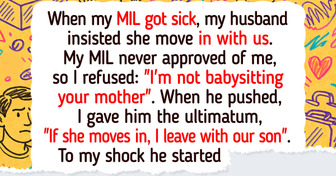
I Cut Off My Parents After They Tried to Manipulate Me With My Inheritance — and the Truth Came Out
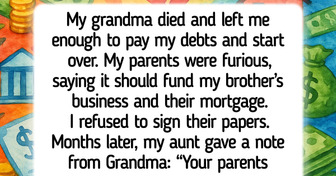
I Refused to Bake My Sister’s Wedding Cake for Free
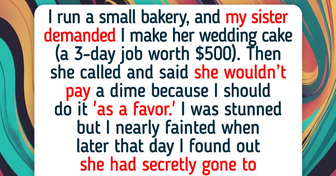
12 Moments That Prove Kindness Still Wins in a World That Turned Cold

I Refused to Help My Sister Save Her Dying Kid, My Money Isn’t a Family Tradition
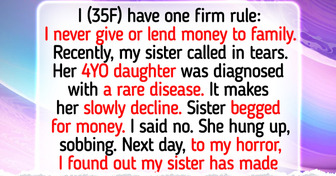
12 Coworker Tales So Crazy, They Could Be a Blockbuster Series
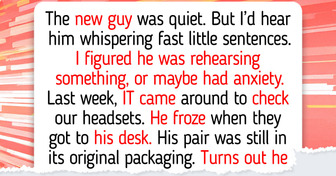
I Trusted My Stepdaughter With My Dog—What Went On Still Makes Me Shiver
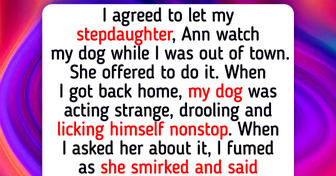
25 Times Kindness Became the Proof We’re Still Human
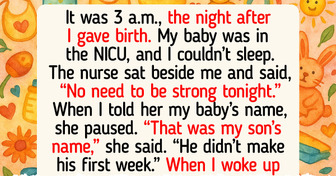
I Refuse to Forgive My Biological Mom, but My Dad Pushes Me to Do It
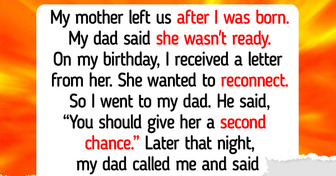
My Husband’s Wedding Speech Was Meant to Be Romantic—It Became My Wake-Up Call Instead
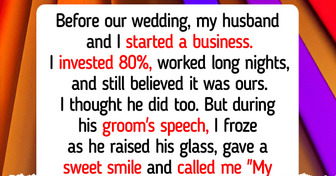
17 Times a Good Deed Went Hilariously Wrong
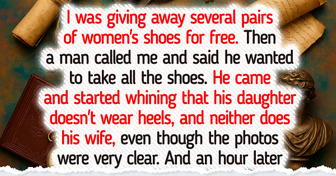
I Refused My DIL’s Outrageous Diet Demands—I’m Not an On-Call Chef
